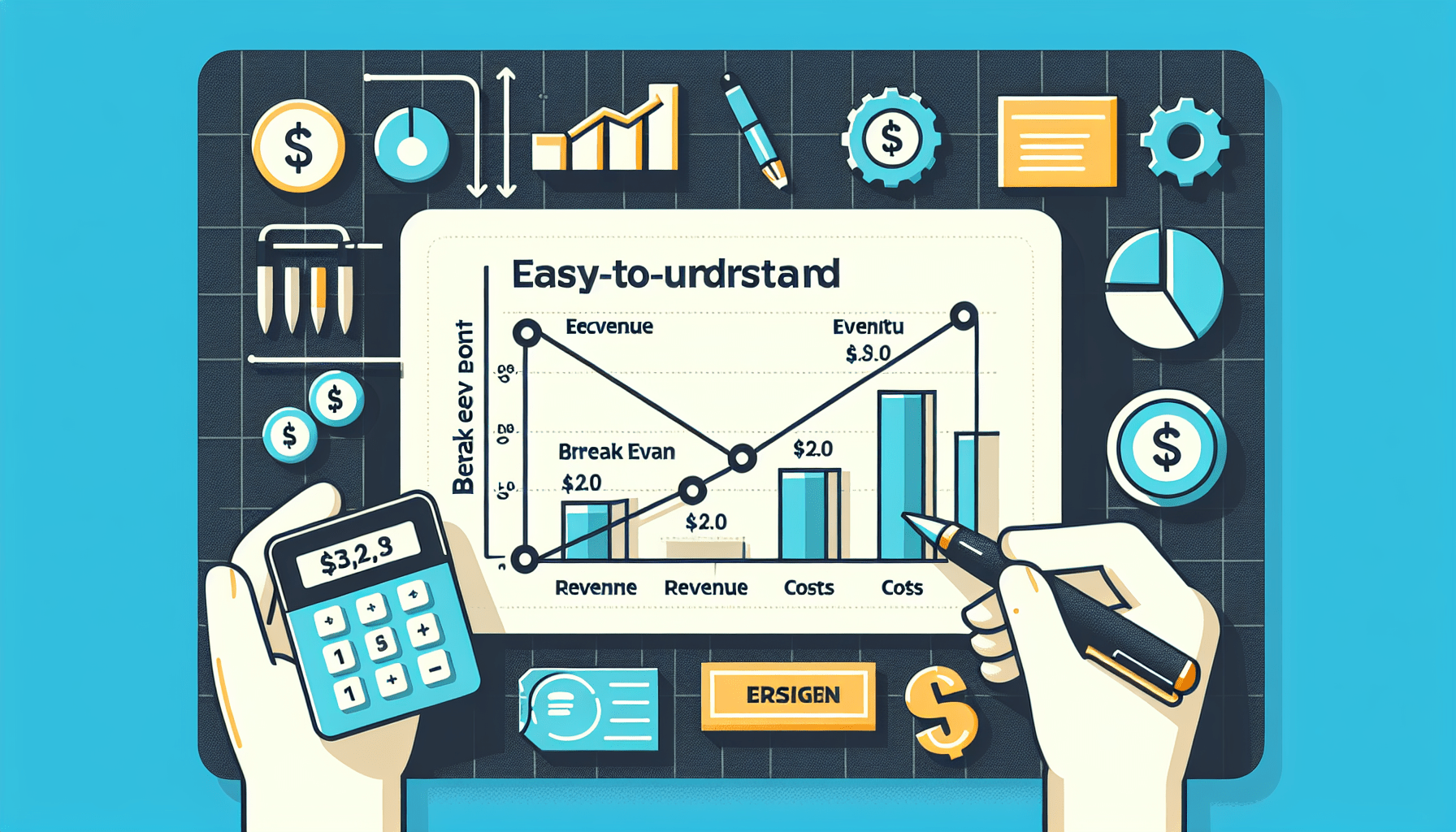Calculating your business’s break-even point is crucial in understanding when your business will begin to make a profit. To calculate this point, you need to determine your fixed costs, variable costs per unit, and selling price per unit. By dividing your fixed costs by the difference between your selling price and variable costs, you can find out how many units you need to sell to cover all expenses. Once you reach this number of units sold, any additional units sold will contribute to your business’s profit. Interpreting your break-even point can help you make informed decisions about pricing strategies, cost control, and overall business performance. How do I calculate and interpret my business’s break-even point?
Calculating your business’s break-even point can provide valuable insights into your company’s financial health and help you make informed decisions about pricing, costs, and profitability. In this article, we will guide you through the process of calculating and interpreting your business’s break-even point.
What is a Break-even Point?
So, you’re probably wondering, what exactly is a break-even point? Well, simply put, the break-even point is the level of sales at which your business’s total revenues equal its total expenses, resulting in neither a profit nor a loss. Knowing your break-even point is crucial for understanding how many units of your product or service you need to sell to cover all your costs.
Why is the Break-even Point Important?
Understanding your break-even point is essential for several reasons. Firstly, it helps you determine the minimum sales volume needed to cover all your fixed and variable costs. This information is valuable when setting prices, creating sales targets, and developing financial projections. Additionally, analyzing your break-even point can highlight potential cost-saving opportunities and efficiency improvements within your business.
Calculating the Break-even Point
Now, let’s dive into the nitty-gritty of calculating your business’s break-even point. The break-even point can be determined using a simple formula:
[ Break-even\ Point\ (units) = \frac ]
To break it down further, fixed costs are expenses that remain constant regardless of sales volume, such as rent, salaries, and insurance. Variable costs, on the other hand, are directly tied to the production or sale of your product or service, such as materials, labor, and commissions.
Let’s break down this formula with an example:
Assume your business has fixed costs of $10,000 per month, a selling price per unit of $20, and variable costs per unit of $10. Plugging these values into the formula:
[ Break-even\ Point\ (units) = \frac = 1,000\ units ]
Interpreting the Break-even Point
Now that you’ve calculated your business’s break-even point in units, you can interpret the results to gain valuable insights into your company’s financial performance. If your break-even point is higher than your current sales volume, it may indicate that your business is at risk of operating at a loss. In contrast, if your break-even point is lower than your sales volume, you have a healthy margin of safety before falling into a loss.
Additionally, analyzing your break-even point can help you identify areas for improvement in your business operations. For example, if your break-even point is relatively high, you may want to consider reducing costs, increasing prices, or boosting sales to achieve profitability.
Sensitivity Analysis
While calculating the break-even point provides a snapshot of your business’s financial health, conducting a sensitivity analysis can offer a more comprehensive view of how changes in variables may impact your break-even point. Sensitivity analysis involves varying key inputs, such as pricing, costs, and sales volume, to assess their impact on your break-even point.
By performing sensitivity analysis, you can evaluate different scenarios and identify the most critical factors influencing your break-even point. This information can be instrumental in developing strategic plans, setting realistic goals, and preparing for potential risks in your business.
Break-even Point in Dollars
In addition to calculating the break-even point in units, you can also determine the break-even point in dollars, which represents the total sales revenue needed to cover all costs and achieve zero profit. The break-even point in dollars can be calculated as follows:
[ Break-even\ Point\ (dollars) = Fixed\ Costs + (Variable\ Costs\ per\ Unit \times Break-even\ Point\ in\ Units) ]
Let’s revisit our previous example with fixed costs of $10,000 per month, a selling price per unit of $20, and variable costs per unit of $10. Using the break-even point of 1,000 units, the break-even point in dollars can be calculated as:
[ Break-even\ Point\ (dollars) = 10,000 + (10 \times 1,000) = 20,000\ dollars ]
Margin of Safety
The margin of safety is another key metric related to the break-even point that provides insights into the cushion your business has before falling into a loss. The margin of safety is calculated as the difference between your actual sales volume and the break-even point, expressed as a percentage.
[ Margin\ of\ Safety\ (%) = \frac \times 100 ]
A higher margin of safety indicates that your business is more resilient to fluctuations in sales and costs, while a lower margin of safety may signal potential risks and vulnerabilities. By monitoring your margin of safety, you can assess your business’s financial stability and make informed decisions to improve profitability.
Contribution Margin
The contribution margin is a critical financial metric that can help you better understand the profitability of your products or services. The contribution margin represents the amount of revenue available to cover fixed costs and contribute to profit after deducting variable costs. Calculating the contribution margin is essential for optimizing pricing strategies, evaluating product profitability, and making informed cost management decisions.
The contribution margin can be calculated using the following formula:
[ Contribution\ Margin = Selling\ Price\ per\ Unit – Variable\ Costs\ per\ Unit ]
Continuing with our example of a selling price per unit of $20 and variable costs per unit of $10, the contribution margin would be:
[ Contribution\ Margin = 20 – 10 = 10\ dollars ]
By analyzing the contribution margin for your products or services, you can identify which offerings are most profitable, allocate resources more effectively, and maximize your business’s overall profitability.
Break-even Analysis in Decision-making
Now that you have a good understanding of how to calculate and interpret your business’s break-even point, let’s discuss how break-even analysis can inform decision-making in your business. By utilizing break-even analysis, you can evaluate different scenarios, assess the financial impact of strategic decisions, and set realistic goals for your business.
For example, if you’re considering launching a new product line, break-even analysis can help you estimate the minimum sales volume needed to cover the costs associated with the new venture. Similarly, if you’re contemplating a price increase, break-even analysis can help you determine the impact on your break-even point and profitability.
Bringing It All Together
In conclusion, calculating and interpreting your business’s break-even point is a valuable exercise that can provide critical insights into your financial performance, cost structure, and profitability. By understanding your break-even point, you can make informed decisions, set realistic goals, and improve the overall health of your business.
Whether you’re a seasoned entrepreneur or just starting your business journey, mastering the concept of break-even analysis can empower you to take control of your finances and steer your business towards success. So, roll up your sleeves, grab your calculator, and start crunching those numbers to unlock the potential of your business’s break-even point.





